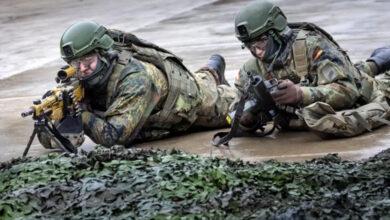Should Ukraine intervene? Discussions about a military operation in Transnistria continue

Transnistria is a narrow strip of land between the Dniester River and Moldova’s international border with Ukraine. This region is a self-proclaimed republic with a unique geographical location that affects its political and social situation. Its location between the two countries makes Transnistria strategically important in the context of regional conflicts and geopolitics. The capital Tiraspol is only a hundred kilometres from Odesa, our most important Black Sea port. Therefore, Ukraine, which has a 3,200 km frontline, has recently attached great importance to the reintegration of Transnistria into Moldova, as it sees the region as a threat to its security. Recently, Ukraine has been stepping up security measures and building fortifications in the area of unrecognised Transnistria.
Transnistria or Transnistria?
Transnistria is a breakaway region within Moldova that declared independence in 1990 but is not recognised by any UN member state. The official name of the region is the Transnistrian Moldovan Republic. In September, the Supreme Council of Transnistria voted to ban the use of the name ‘Transnistria’, insisting on using only the term ‘Transnistria’ or ‘Transnistrian Moldovan Republic’. The leader of the pro-Russian separatists, Vadim Krasnoselsky, said that he associates the term ‘Transnistria’ with ‘hunger, destruction, murder, blood, destruction of people – the Holocaust’. In turn, the Moldovan Bureau for Reintegration noted that the term appeared long before Nazism or fascism.
Transnistria is located on the eastern bank of the Dniester River, on the border between Moldova and Ukraine. A significant part of the population consists of Moldovans, Russians and Ukrainians. In 1990, after the collapse of the USSR, Transnistria declared its secession from Moldova, fearing nationalist and assimilationist tendencies in the newly formed state. The conflict between Moldova and Transnistria escalated into military clashes in 1992, which ended in a Russian-mediated ceasefire. Since then, the region has existed as a de facto independent state, although it is de jure part of Moldova.
Transnistria has its own governmental institutions, including a president, parliament and army, but its independence is not recognised by any country. Russia’s influence here remains significant. The region is heavily dependent on Russian support. The economy is based on industry and trade, but living standards remain low. Moscow de facto controls the region, using it as a forward operating base, and illegally keeps about 1,700 troops there. Transnistria has been a source of ongoing tension in the region, and the issue of its status has remained open for over 30 years.
Each conflict is unique
The Transnistrian conflict has several unique features. One of the main ones is that there is no strong desire for reunification with the occupied territory in Moldovan society. Public opinion polls have never shown that the return of Transnistria is a priority for Moldovan citizens.
The key reason for this is that Transnistria fell out of Chisinau’s control before the collapse of the Soviet Union in 1990. And in 1991, when Moldova declared its independence, the region was actually outside its jurisdiction.
An additional factor is the traumatic experience of the 1992 war, which Moldova lost. This conflict left a deep imprint, making any military reintegration scenario unacceptable and ‘toxic’ for society.
Another peculiarity of the conflict is that it did not lead to a deep split between the societies on both sides of the Dniester. Neither in 1990 nor now do residents of Tiraspol and Chisinau perceive each other as enemies. The majority of people’s attitude to life and people on the other side of the river can be described as ‘indifference’ rather than hostility or dislike.
Calls for a military operation in Transnistria began to appear actively in the Ukrainian information space in the spring of 2022 and are now becoming louder. Proponents of this scenario argue that it has several key advantages:
- Elimination of the military threat on Ukraine’s southwestern border. If Ukraine carries out an operation in Transnistria, it would eliminate the potential threat from pro-Russian forces in the region and allow the Ukrainian Armed Forces to focus on other fronts, reducing the need to maintain troops on the border with Transnistria.
- Access to ammunition depots. A military operation could give the Ukrainian military access to large ammunition depots in Transnistria that remain from the Soviet era. These stockpiles could be used to support military operations against Russia.
- Improving the exchange fund for prisoners of war. As a result of the operation, the Ukrainian military could capture Russian troops stationed in Transnistria, which would increase the possibility of exchanging prisoners with Russia, including the return of Ukrainian troops.
- Stabilising the situation in Moldova. Resolving the issue of occupied Transnistria would eliminate the long-standing instability in Moldova caused by the unrecognised region. This, in turn, would allow Chisinau to focus on reforms and integration into Western structures such as the EU and NATO, strengthening the country’s pro-Western orientation.
Thus, supporters of the military scenario see it as an opportunity not only for Ukraine, but also for strengthening security and stability in the entire region.
Will military intervention in Transnistria be effective?
From a military point of view, an operation against Transnistria seems logically justified. The military potential of Russian forces and their proxies in Transnistria is very limited due to the lack of supplies from Russia. The region does not have modern weapons, electronic warfare and air defence capabilities.
Another weakness of Transnistria’s defence is the low motivation of the local military, who mostly joined the army to earn money rather than to actively participate in hostilities. Attempts to conduct general mobilisation are likely to lead to a massive flight of residents to the right bank of the Dniester, as the administrative border with Moldova is not sufficiently controlled.
However, Transnistria’s quick surrender in the event of a clash with the Ukrainian armed forces should not be expected. Russian officers integrated into the local security forces and some ideological supporters of the ‘Russian world’ may put up serious resistance, especially in cities such as Tiraspol, Bender, and Ribnita. Street fighting in urban areas could lead to significant losses, including civilian casualties, which would exacerbate the negative consequences of this scenario.
Experts of the Jacques Delors Institute believe that Transnistria is not a military front, despite the presence of the 14th Russian Army and the length of the border with Ukraine. Neither the administration, nor the economic elites, nor the population of the region are willing to participate in the war in Ukraine. In February 2022, none of the Transnistrian military crossed the Ukrainian border, probably due to the lack of capabilities to attack and defend the region. In mid-April 2024, Ukrainian MP Oleksiy Honcharenko raised the issue of military intervention in Transnistria at the Parliamentary Assembly of the Council of Europe. However, Moldovan Foreign Minister Mihai Popsoi rejected the proposal, stressing the need for a peaceful resolution of the conflict. In general, Moldova, whose neutrality has been enshrined in its constitution since 1994, does not support a military solution to the Transnistrian issue. Under the current circumstances, pursuing such a path would expose the country to the risk of Russian repression, unprecedented since the end of the Transnistrian war. This situation shows that Ukraine has no intention of joining Russia in the conflict.
The International Institute for Strategic Studies also believes that officials in the Transnistrian capital, Tiraspol, have maintained a deliberate neutrality, keeping channels of communication open with Kyiv despite Moscow’s continued support for the region. They also note that the region faces serious economic and political challenges due to the full-scale invasion, especially due to the closure of the important border with Ukraine. This is leading to increased dependence on Moldova, increasing the sense of vulnerability among local leaders and the population.
A regime forced to balance between Chisinau and Moscow
As a result of the war, Moscow’s attempts to destabilise Moldova’s legitimate government and the country’s application for European Union membership have significantly deteriorated relations between Moscow and Chisinau. This is confirmed by the national security strategy adopted in December 2023, which clearly identifies Russia as an adversary.
At the same time, the pro-Russian vector of Transnistria’s policy towards the Russian Federation has significantly strengthened. In early February 2024, the Institute for the Study of War warned that the Transnistrian authorities might organise a referendum on joining Russia at the Congress of Deputies to be held on 28 February. It was assumed that the reason for this could be the stated need to protect Russian citizens and ‘compatriots’ in the region from threats from Moldova or NATO.
A few days ago, the topic of the plebiscite was again raised in Transnistria, but in a completely different political context. The regime in Tiraspol demanded that a referendum on the EU be organised in its region as well, arguing that it was necessary to obtain the real opinion of ‘all Transnistrians’. The request was qualified in Chisinau as ‘a manipulative action, most likely commissioned by external forces’.
A harmful scenario for Transnistria
A military scenario in Transnistria would be harmful to Ukraine for several reasons. First, Transnistria is part of Moldova, and a unilateral operation by the Ukrainian Armed Forces would violate international law and look like aggression against Moldova. This could split support for Ukraine among its international partners.
Many hope that Moldova will ask Ukraine for military assistance, but this will not happen. There is a general consensus in Moldova against a military solution to the conflict, and President Sandu does not even have the authority to invite foreign troops without parliamentary approval, which is unlikely.
Most importantly, a military operation by the Armed Forces would damage Moldova’s pro-European government, weakening it ahead of the 2024-2025 elections. This could slow down Moldova’s path to the EU, which would also have a negative impact on Ukraine, as both countries are seen by the EU as a joint ‘package’.





